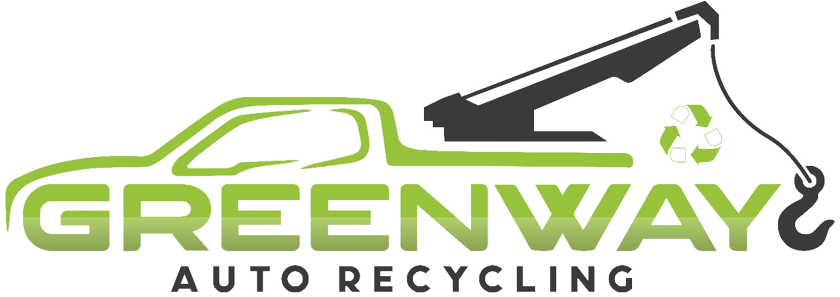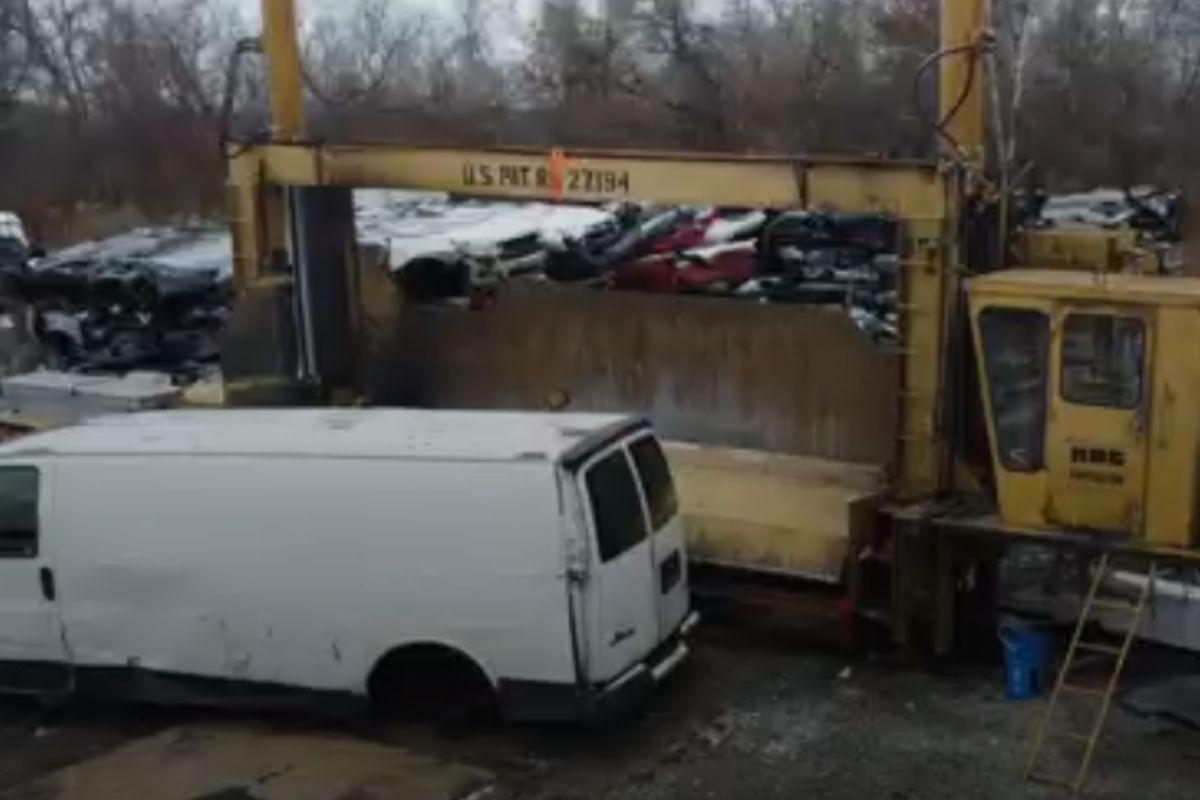Introduction
The auto salvage industry has evolved significantly, from traditional dismantling yards to advanced recycling depots that maximize value from end-of-life vehicles. The focus is now on recovering usable parts, extracting metals, and minimizing disposal.
This shift has transformed the auto salvage industry from a basic refurbishing and dismantling model into one that blends mechanical expertise with advanced technology to recycle end-of-life vehicles in a more efficient, safe, fast, and clean manner. Read on to understand how recycled vehicles are now providing a sustainable and profitable auto salvage solution in the recycling industry.
Vehicle Depollution for Hazardous Material Removal
Depollution is the first and most essential step in the modern vehicle recycling process. Depollution is the removal of hazardous fluids and materials from the vehicle before dismantling the vehicle can begin. Depollution safeguards the environment, ensures regulatory compliance, and protects workers and the public from exposure to hazardous substances.
Fluids normally removed during depollution include engine oil, transmission fluid, brake fluid, coolant, and fuel. Other materials removed include batteries, airbags, and air-conditioning refrigerants, as these materials can seriously affect the environment. The process has improved significantly with modern depollution rigs, making it considerably safer and more efficient.
These rigs incorporate a vacuum extraction system, which makes removing fluids less messy and less likely to contaminate surrounding areas. Proper depollution is critical for environmental overall safety and protecting not only workers at the subsequent stages of recycling but also the environment.
Automated Dismantling and Part Harvesting
After a vehicle goes through the depollution process, the next stage is dismantling the vehicle and harvesting the usable parts. Previously, this step was completed by hand, but more salvage yards are now utilizing automated processes and robotic arms for dismantling. Machines can quickly dismantle components like engines, transmissions, alternators, and catalytic converters because they extract valuable parts.
Robotic dismantling represents an effective way to reduce labour costs, expedite the process, and ensure a consistent quality of recovered parts. Some facilities use artificial intelligence (AI) powered software to determine which parts are hot and in demand. This information helps optimize dismantling to increase profit and reduce unsellable inventory.
Fluid Recovery and Reuse Systems
Older methods often resulted in the uncontrolled release of fuel, oil, coolant, or other liquids into the environment. Modern auto salvage facilities use advanced systems that safely recover and store fluids for reuse by safely recovering and storing fluids for reuse. Fuel recovered from vehicles can be filtered and reused. Motor oil is sent off to be re-refined into usable lubricants. Coolants can be captured, cleaned up, and resold for use in other vehicles. There’s even windshield washer fluid that can be recovered and reused. The most important part of this system is the reduction in contamination of soil and water while capturing and indirectly recycling waste.
Advanced Metal Separation Technologies
Magnetic separation is used to capture ferrous metals (steel and iron), and eddy current systems recover non-ferrous metals such as aluminum and copper.
Optical sorting systems can differentiate metals based on spectral signals, ensuring even small fragments can be recovered. Improvements in separating metals reduce the volume of recyclable metal lost in the process, while improving the quality of the materials sent to the smelter. Purity means a higher price in the recycling market, thus adding financial and environmental benefits from using advanced metal separation technologies.
Also Read: Scrap Car and Metal Prices in Ontario: What You Can Earn and Why They Fluctuate
Plastic Identification and Recycling
Automobiles contain several plastics from the dashboard to the bumpers. In the past, many plastics were discarded because sorting different types was challenging. New plastic identification systems use near-infrared scanners to quickly and accurately identify different plastic types. Once identified, plastics can be sorted, cleaned, and then formed into pellets for manufacturers to use in making new products. Recycled auto plastics can be used in producing furniture, building materials, or even in the production of new automobiles. This represents a lower reliance on virgin materials and therefore a lower environmental impact.
Battery Recycling Advancements
With the rise of electric and hybrid vehicles, battery recycling has become a major focus. Modern facilities are able to recover valuable metals from spent batteries via hydrometallurgical or pyrometallurgical processes, such as lithium, cobalt, and nickel.
Hydrometallurgical processes use chemical solutions to recycle batteries in a more energy-efficient manner than traditional mining operations, and pyrometallurgical processes extract materials at elevated temperatures. The metals are recovered from non-usable batteries, and are probably supplied back into the battery manufacturing process instead of extracting valuable materials through the traditional route of mining. This can help facilitate the sustainability of electric mobility.
Tire Recycling and Material Recovery
In the past, discarded tires presented a notorious waste problem because they are one of the slowest materials to decompose. New recycling technologies can now provide a much better path for used tires and their materials. One of the most common recycling methods involves shredding tires into crumb rubber that can be used for playgrounds, sports fields, and roads.
Some facilities can even convert tires into fuel using pyrolysis, which deconstructs rubber into oil, gas, and carbon black. This not only reduces landfill waste but also creates value from materials that were previously considered worthless.
Glass As Well As Windshield Recycling
In the past, automotive glass—especially laminated windshields—was difficult to recycle due to the layer of plastic between the sheets of glass. Today, modern recycling technologies that use heat treatment and mechanical separation have come to allow the glass to be separated and recovered from the lamination layer.
This recovered glass could be turned into fibreglass insulation, as well as glass bottles or new automotive glass. The plastic interlayer is frequently reused in industrial applications, achieving a complete recycling loop.
Component Refurbishment and Remanufacturing
Some parts removed from salvage vehicles are not just recycled but fully remanufactured for reuse. The parts refurbishment process involves cleaning, repairing, and testing components such as starters, alternators, and transmissions.
By returning components to original design specifications, these parts can be sold with warranties, offering consumers an affordable option and less waste. Also, remanufacturing uses dramatically less energy than creating new parts, making this a green option.
Also Read: The Journey of Used Car Parts: From Canadian Scrap Yards to Global Markets
Recycling of Hybrid and Electric Vehicle Batteries
The growth of electric and hybrid vehicles has created new recycling opportunities and challenges. Battery packs contain valuable materials like lithium, cobalt, and nickel; however, they require safe management as there are safety risks. Modern recycling facilities use methods such as mechanical separation, hydrometallurgical processing, and direct cathode recycling, which safely separate metals from battery packs.
It allows the metals in battery packs to be reused in the manufacturing of new lithium batteries, thus reducing the demand of mining raw materials. Proper recycling also mitigates the hazards of hazardous chemicals entrained in the environment.
Conclusion
The auto salvage industry has developed into an advanced recycling network that functions in a cross-continental arena, powered by technology and environmental obligation. From advanced dismantling systems to chemical recycling and AI sorting, there is maximum efficiency and minimal waste for end-of-life vehicles.
Greenway Auto Recycling is a prime example of a business that supports responsible scrap car removal and license plate return while using modern, technology-driven recycling practices. By choosing facilities like Greenway, customers help protect the environment while actively contributing to a more sustainable, circular economy in auto recycling.
Frequently Asked Questions
1. What happens to a car after it’s scrapped?
After a car is scrapped, it goes through a structured recycling process that includes depollution, dismantling, part recovery, metal separation, and material recycling.
Usable parts such as engines, alternators, batteries, and catalytic converters are harvested for resale. Metals are separated using advanced magnetic and eddy-current systems, while plastics, tires, fluids, and glass are processed through various recycling technologies.
The goal is to maximize recovery, reduce landfill waste, and return valuable materials back into the manufacturing supply chain.
2. How does depollution work in modern auto recycling?
Depollution is the first and most important step in recycling a vehicle. It involves safely removing all hazardous fluids and materials, including engine oil, fuel, coolant, brake fluid, transmission fluid, batteries, refrigerants, and airbags.
Modern depollution rigs use vacuum extraction and sealed systems to prevent spills, contamination, and exposure to harmful substances.
This process ensures compliance with environmental regulations and makes the rest of the recycling workflow safer and more efficient.
3. What parts of a vehicle can be recycled?
Today, nearly 95% of a vehicle can be recycled or recovered. Common recyclable components include:
- Metals: steel, aluminum, copper
- Mechanical parts: engines, transmissions, alternators, starters
- Plastics: bumpers, dashboards, interior trim
- Glass: windshields, windows
- Tires: crumb rubber, pyrolysis fuel
- Fluids: fuel, oil, coolant, washer fluid
Even electric and hybrid vehicle batteries can be recycled to recover lithium, cobalt, and nickel.





